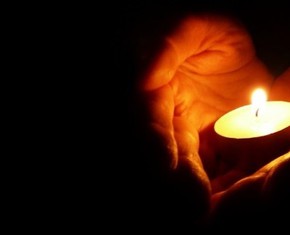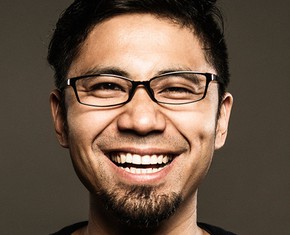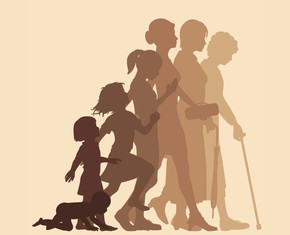The views expressed in our content reflect individual perspectives and do not represent the authoritative views of the Baha'i Faith.
In the depth of winter, I finally learned that within me there lay an invincible summer. – Albert Camus
What good is the warmth of summer, without the cold of winter to give it sweetness? – John Steinbeck
There is an instinctive withdrawal for the sake of preservation, a closure that assumes the order of completion. Winter is a season unto itself. – Haruki Murakami
…the requirements of winter are cold, snow, hail and rain – but the birds and animals who live for six months, enjoying a short span of life, not realizing the wisdom of winter, chide and make lament and are discontent, saying, “Why this awful frost? Why this hail and storm? Why not the balmy weather? Why not the eternal springtime? Why this injustice on the part of the creator? Why this suffering? What have we done to be meted out with this catastrophe?”
However, those souls who have lived many years and have acquired much experience and have weathered many severe winters realize that in order to enjoy the coming spring they must pass through the cold of winter. – Abdu’l-Baha, Divine Philosophy, p. 116.
Winter has come to the Sierra Nevada mountains, where I live, and frosted the towering evergreen trees in white.
The snow falls softly and quietly through the night, and in the morning the sun dawns in the east under the low curtain of overcast to light it all with a bright icy sheen. Building a fire in the wood stove, my morning ritual, I keep the kindling loose and pile up the oak logs in a pyramid, to draw the air through the flames and upward. Few birds chirp. The forest, raucous with life in every other season, keeps its own counsel this time of year, like an old man who knows wisdom and respects its silence. A grey squirrel makes a mad dash across the snow with a big acorn in its mouth, maybe the last one around. A hawk soars overhead, clouds scudding above him. Nothing makes any noise, as if in awe of nature’s hushed time. Winter has come, and the Earth sleeps.
The cycle of the seasons here, so regular and so pronounced, puts me in mind of other kinds of cycles.
We all begin with the cycle of breath, that first holy intake of air at birth that startles us awake from the womb world. We breathe in and out, inspiration followed by expiration. Do you know the medical name for one inspiration and one expiration, one inhalation and one expiration? Physicians call it the tidal volume—just like the ocean tides, our bodies ebb and flow from one breath to another. The sacred breath of life, called chi in Chinese medicine, prana by the Tibetans and the Hindus, and orenda by the Iroquois, cycles through us and gives us life.
When we’re babies, we take a breath every second or two. As healthy adults, we breathe between 12-20 times a minute, an average of 900 times an hour, about 20,000 times a day, maybe 7 million respiratory cycles and tidal volumes each year. We do it without thought or conscious control, largely unaware of that basic cycle which keeps us alive.

Did you know that laughter is simply repeated sharp breaths? When we laugh, we breathe the joy of life in as fast as we possibly can.
So we breathe in cycles, and do just about every other one of life’s tasks in cycles, too. We sleep and wake; our hearts beat rhythmically; and although we have no real awareness of it, our bodies continually recreate every individual cell in a constant internal cycle of growth, death and renewal. In our bloodstream, red blood cells live for about four months, while white blood cells live on average more than a year. (The only cells in our bodies that don’t replace themselves when they die? Neurons, or brain cells.) Skin cells live about two or three weeks. Ever wonder what how all that dust gets in your house during the winter, when the doors and windows stay closed? Did you know that about 90% of household dust comes from the accumulation of skin cells. Dust to dust, right?
So our physical beings undergo constant cycles, recurrent patterns that keep us alive from one moment to the next. Like the seasons, though, we also move through the larger, longer cycles of life—from birth to infancy to childhood to adolescence and then finally to adulthood, when we reach the full measure of our growth cycle. This universal pattern of human progress, the Baha’i teachings say, appears in specific stages of development, both physically and spiritually:
The realities of things are manifested in a degree proportionate to their stations, ranks, receptivity and capacity. For instance, regard the human reality, its spiritual perfections, the properties and virtues of the soul: their appearance and manifestation, their propagation and growth depend in degree upon the stage of development reached in the course of this earthly life, which ranges from the condition of the primal germ to the highest stations of mature development. The same principle is to be found in the whole of existence, seen and unseen. – Abdu’l-Baha, Tablet of the Universe, provisional translation.
Evolution in the life of the individual starts with the formation of the human embryo and passes through various stages, and even continues after death in another form. The human spirit is capable of infinite development. Man’s identity or rather his individuality is never lost. His reality as a person remains intact throughout the various states of his development. – Shoghi Effendi, from a letter to an individual Baha’i, November 26, 1939.
In this series of essays on the cycles and stages of life, let’s take a look at the human states of development, and see if we can figure out where they lead us.
Next: Light and the Winter of Life
















Comments
Sign in or create an account
Continue with Googleor